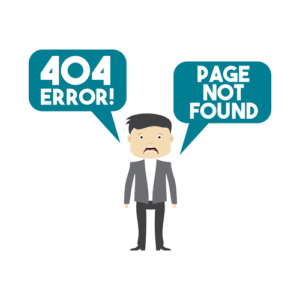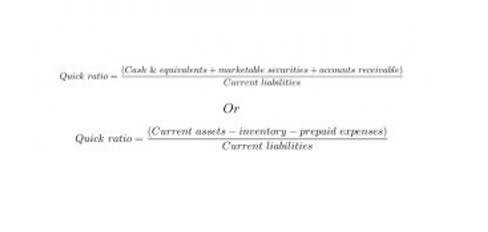
Companies that buy a lot of goods or services can easily fall into financial statement errors, potentially causing big money losses. The Association of Certified Fraud Examiners found that companies lose about 5% of their yearly earnings to these mistakes. To fight this, companies regularly check their accounts, including the balance sheet and money owed by customers, using software. After identifying the reasons for discrepancies, take appropriate corrective actions. Accounts payable balances are verified by comparing the general ledger amount to vendor statements or subsidiary AP ledgers, ensuring all vendor obligations are accurately recorded.
- Reconciliation involves systematically comparing these ledger balances with external documentation or subsidiary ledgers to identify and rectify discrepancies.
- The purpose of reconciliation is to confirm the accuracy, completeness, and validity of financial data.
- By regularly reviewing and verifying your records, you can catch errors, prevent fraud, and ensure your finances are accurate.
- This includes detailing the date, amount, description, and supporting documents for each transaction.
- Regular reconciliation of the general ledger allows businesses to quickly identify and correct errors, ensuring that financial records accurately reflect the company’s financial activity.
- When discrepancies are identified, thoroughly investigate to determine their causes.
Gather Supporting Documentation

On track for 90% automation by 2027, HighRadius is driving toward full finance autonomy. Understanding how to reconcile general ledger is crucial for ensuring the accuracy, integrity, and transparency of financial operations within an organization. At every stage of a business, financial discipline plays a pivotal role in scripting the success story. In the absence of it, even with the best products and the team, a company may falter in achieving the desired goals.

Minimize Errors and Improve Accuracy
This proactive approach is crucial in preventing potential fraudulent activities and protecting the company’s assets. By closely monitoring transaction records and account balances, companies can identify and https://hotel-calipso.ro/2022/05/05/accounting-equation-explained-formula-more/ address red flags before they escalate into significant financial losses. After the reconciliation is complete, review the process to identify any systemic issues that could be improved to prevent similar discrepancies in the future. Schedule regular follow-up reconciliations to ensure ongoing accuracy of the general ledger and to maintain financial integrity. The entire reconciliation process, including comparison, identification and investigation of discrepancies, and adjusting entries, must be documented. This documentation provides a clear audit trail, supports future reviews, and demonstrates compliance with accounting standards.
Comparing Beginning and Ending Account Balances
- For more complex reconciliation scenarios, consider exploring automated solutions that can streamline this process and improve accuracy.
- By automating the reconciliation process, you can eliminate manual data entry errors and reduce the risk of human error.
- Document these timing differences and double-check they’re posted correctly in the following reconciliation.
- As part of the review process, examine all supporting documentation such as bank statements, invoices, and receipts.
- Double-checking transaction dates against bank statements is also a smart move.
- This review evidence gets noted on the reconciliation documentation before formal approval.
It should provide clear financial insights that help finance teams collaborate more effectively with other departments, ensuring all business functions align with financial goals. It helps with reducing the time and How to Run Payroll for Restaurants effort required for manual verification. It allows accountants to focus on analysis and strategic planning rather than time-consuming error detection. These best practices will help you streamline the process and improve accuracy.

Why Don’t Tips Show Up on Your Credit Card?
Data from the general ledger is used to prepare a variety of financial statements including cash flow statements, income statements and the company balance sheet. Such statements are of vital importance to business leaders and stakeholders. By being aware of these common errors, you can implement general ledger reconciliation strategies to avoid them and maintain accurate and reliable financial records. If corrections are needed, prepare journal entries to adjust the account balances. For instance, if a transaction was recorded twice, an adjusting entry will remove one of the entries. Post these adjustments to ensure the general ledger reflects accurate balances.
Typical Mistakes Made During the General Ledger Reconciliation Process
When using accounting software, you often post to an account by referencing its account number rather than its account name. If you accidentally post to the wrong account, more than just one account will be off in your reconciliation. Reconciling all your accounts may take some getting used to, but once you have a process in place, it should go more smoothly with each passing month. Here are a few things you’ll need to watch out for when performing monthly, quarterly, or annual GL reconciliations. These accounts can be further categorized into subledgers to whatever degree your company wants.
General ledger (GL) account reconciliation is a fundamental accounting process that ensures the accuracy, completeness, and reliability of an organization’s financial records. It involves comparing the balance of a general ledger account with an independent, external source of information or a related sub-ledger. This verification process confirms that all transactions are accurately recorded and that account balances truly reflect the financial position. Business owners, bookkeepers, and accountants commonly perform these reconciliations to maintain robust financial integrity. Modern reconciliation software automates the entire process, eliminating the need for extensive IT support. Platforms like Ledge allow you to quickly set up automated general ledger reconciliation without any engineering required.
Reconcile Your General Ledger: Key Steps
- This section covers frequent errors and provides actionable steps to improve your reconciliation process.
- Account reconciliations play a part in internal auditing and external auditing, where financial balances are verified as part of validating published financial reports.
- This organized approach will streamline future reconciliations and provide a clear record of your financial activities.
- Auto-certification capabilities dramatically reduce the manual tasks being performed by accounting staff, allowing accountants to focus on analysis.
- Comparing beginning and ending balances for accounts without external statements is a good way to verify accuracy.
We’ll also discuss the importance of regular audits and reviews, as well as training your staff on reconciliation best practices. Itensures your general ledger accounts match up perfectly with your bank andcredit card statements. For hardware startups, it’s a game-changer, boostingaccuracy, cash flow optimization, and investor trust. Reconciliation software can automate many of the manual tasks involved in the process, such as data entry and matching.

Common reasons for variances include timing differences, such as deposits not yet processed by the bank or checks not yet cleared. Errors are another frequent cause, ranging from data entry mistakes to transactions recorded in the wrong account or duplicated entries. Missing transactions, such as unrecorded payments or invoices, can also lead to imbalances. Tracing individual transactions and reviewing entries helps pinpoint the exact source of the difference. The general ledger reconciliation process begins with obtaining the necessary records for the specific accounting period.








